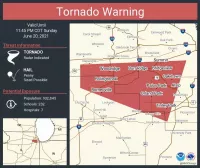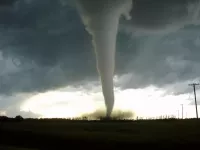The Daytona 500 is a 500-mile NASCAR Cup Series race held annually at Daytona International Speedway in Daytona Beach, Florida. As one of two Cup races at Daytona, it's a prominent event in Florida's racing calendar. From 1988-2019, it was a restrictor plate race. The inaugural race in 1959 marked the speedway's opening, and since 1982, it has been the season-opening race of the Cup series. It holds significant importance within NASCAR.
Mentioned in this timeline
CBS Broadcasting Inc CBS is a prominent American commercial broadcast...
The National Broadcasting Company NBC is a major American commercial...

A tornado warning is a critical alert issued by weather...

A car also known as an automobile is a wheeled...

A tornado is a rotating column of air connecting the...
Daytona International Speedway located in Daytona Beach Florida is a...
Trending

1 hour ago Rome Odunze ruled out against Packers due to heel injury Sunday.
1 hour ago World Cup 2026 Draw: Brazil in Group C, France's Path
2 hours ago Senegal faces debt restructuring concerns amid IMF funding talks and BoFA warning.

2 hours ago McDavid and Draisaitl approach Gretzky's level, featuring in NHL's November top plays.

2 hours ago Blake Lively Accuses Justin Baldoni of Hostile Environment on 'It Ends With Us' Set

2 hours ago Alycia Parks vs Tamara Korpatsch in Angers: Preview, Prediction, and Betting Tips
Popular
Aftyn Alyssa Behn is an American politician currently serving as...
Matt and Ross Duffer known as the Duffer Brothers are...

Lane Kiffin is an American football coach currently serving as...

XXXTentacion born Jahseh Dwayne Ricardo Onfroy was a controversial yet...

Candace Owens is an American conservative political commentator and author...

Ilhan Omar is an American politician currently serving as the...